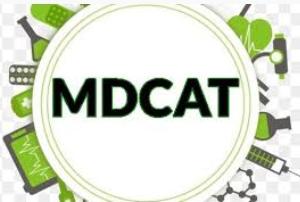Chemistry MDCAT MCQs and the most conceptual and tough questions with answers to prepare yourself for the Entry Test.
1. Organic compounds could be synthesized by living organisms (plants and animals) only. This is in accordance to:
A) Crystal field theory
B) Vital force theory
C) Valance bond theory
D) VSEPR theory
Answer; (B)
2. Consider the following properties of organic compounds.
I. Isomorphism
II. Catenation
III. Complexity of organic compounds
IV. Isomerism
Which of the above statements is/are incorrect about organic compounds?
A) I only
B) II only
C) II and IV
D) I, II, III and IV
Answer: (A)
3. All of the following substances are inorganic EXPECT:
A) Sodium carbonate
B) Carbon disulfide
C) Sugar
D) Graphite
Answer: (C)
4. Which 14 of the following is a heterocyclic compound?
A) Pyridine C) Toluene
B) Naphthalene D) Benzaldehyde
Answer: (A)
5. The type of compounds which contain an open chain of carbon atoms are called:
A) Aliphatic C) Alicyclic
B) Aromatic D) Heterocyclic
Answer: (A)
6. The homocyclic compounds which contain a ring of 15 three or more carbon atoms are called:
A) Aromatic C) Alicyclic
B) Heterocyclic D) Aliphatic
Answer: (C)
7. Fullerenes are molecules composed entirely of carbon in the form of a hollow sphere, ellipsoid, or tube. Spherical fullerenes are known as:
A) Bucky Balls C) Graphite
B) Diamond D) Carbon black
Answer: (A)
8. -SH is a functional group of:
A) Alkanol C) Thioalcohol
B) Alkanal D) Alkanone
Answer: (B)
9. Consider the following statements for a functional group.
I. It serves as a basis for nomenclature of organic compounds
II.It serves to classify organic compounds into different classes
III.It is a site of chemical reaction
Which of the above statements is/are correct for a function group?
A) I only C) II only
B) II and III D) I, II and III
Answer: (D)
10. Which of the following does not show a functional group
isomerism?
A) CH3 –CH2 – O – CH2 – CH3 and H3C – CH2 – CH2 – CH2 OH
B) CH3 – CH2–CHO and CH3 – CO – CH3
C) CH3 – COOH and H – COO – CH3
D) H3C – NH – C3H7 and C2H5 – NH – C2H5
Answer: ( D)
11. The type of isomerism that arises due to the unequal distribution of carbon atoms on either side of the functional group is called:
A) Chain isomerism C) Position isomerism
B) Metamerism D) Tautomerism
Answer: (B)
12. : Which of the following shows functional group isomerism?
A) C3H – CH2CH = CH2 and H3C CH=CH – CH3
B) CH3 – CH2CHO and CH3COCH3
C) (CH3)3 CH and CH3 – CH2 – CH3 – CH3
D) H3C – NH – C3H7 and C2H5 – NH – C2H5
Answer: ( B)
13. Butan-2-ol and butane-1-ol show which of the following type
of structural isomerism:
A) Metamerism C) Functional group isomerism
B) Position isomerism D) Chain isomerism
Answer: (B)
14. Which of the following substances shows Tautomerism?
A) α-amino acid C) Ethanol
B) Vinyl alcohol D) Both A and B
Answer: (D)
15. The type of structural isomerism that arises due to the shifting of
proton from one atom to the other atom in the same molecule is called:
A) Metamerism C) Sterioisomerism
B) Mesomerism D) Tautomerism
Answer: (D)
16. Mark the incorrect statement for cis-trans isomerism.
A) Having a carbon-carbon double bond
B) Different groups attached with carbon-containing double bond
C) Carbon-carbon double bond involves free rotation
D) In the cis-form similar groups lie on the same side of the carbon-carbon double bond { C = C }
Answer: (C)
17. Which of the following does not show geometric isomerism:
A) 2-Butene C) 1-Pentene
B) 2-Pentene D) 1-Bromo-2-chloropropene
Answer: (C)
18. : Which of the following compounds does not show optical isomerism?
A) Valine C) Proline
B) Histidine D) Glycine
Answer: ( D)
19. ) Example of functional group isomerism.
A) C3H – CH2CH = CH2 and H3C CH=CH – CH3
B) CH3 – CH2CHO and CH3COCH3
C) (CH3)3 CH and CH3 – CH2 – CH3 – CH3
D) H3C – NH – C3H7 and C2H5 – NH – C2H5
Answer: ( B)
20. Fullerenes are molecules composed entirely of carbon in the form of a
hollow sphere, ellipsoid, or tube. Spherical fullerenes are known as
Bucky Balls.
A) Solid Balls
B) Bock Balls
C) Bucky Balls
D) Black Balls
Answer: ( C)

